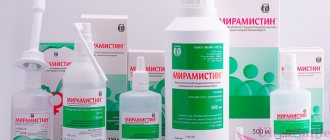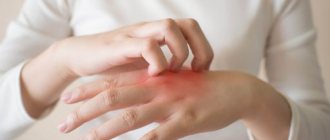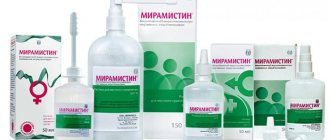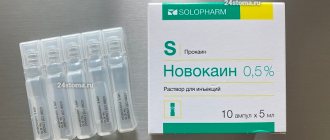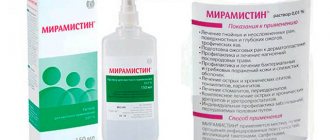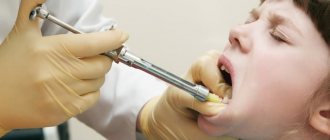Miramistin solution with gynecological attachment 0.01% 50 ml
The drug is ready for use. Instructions for using the packaging with spray nozzle:
1. Remove the cap from the bottle and also remove the urological applicator from the 50 ml bottle.
2. Remove the supplied spray nozzle from its protective packaging.
3. Attach the spray nozzle to the bottle.
4. Activate the spray nozzle by pressing again.
Directions for using the 50 ml or 100 ml pack with gynecological attachment:
1. Remove the cap from the bottle.
2. Remove the supplied gynecological attachment from the protective packaging.
3. Attach the gynecological attachment to the bottle without removing the urological applicator.
Otorhinolaryngology.
For purulent sinusitis, during puncture the maxillary sinus is washed with a sufficient amount of the drug.
Tonsillitis, pharyngitis and laryngitis are treated by gargling and/or irrigation using a spray nozzle, pressing 3-4 times, 3-4 times a day. The amount of drug per rinse is 10-15 ml.
In children. In case of acute pharyngitis and/or exacerbation of chronic tonsillitis, the pharynx is irrigated using a spray nozzle. Children aged 3-6 years: by pressing the head of the spray nozzle once (3-5 ml per irrigation), 3-4 times a day, for children aged 7-14 years by pressing twice (5-7 ml per irrigation) , 3-4 times a day, for children over 14 years of age, by pressing 3-4 times (10-15 ml per irrigation), 3-4 times a day. Duration of therapy
ranges from 4 to 10 days, depending on the timing of remission. Dentistry.
For stomatitis, gingivitis, periodontitis, it is recommended to rinse the mouth with 10-15 ml of the drug, 3-4 times a day.
Surgery, traumatology, combustiology.
For preventive and therapeutic purposes, the surface of wounds and burns is irrigated, wounds and fistula tracts are loosely tamponed, gauze swabs soaked in the drug are fixed. The treatment procedure is repeated 2-3 times a day for 3-5 days. A highly effective method of active drainage of wounds and cavities with a daily consumption of up to 1 liter of the drug.
Obstetrics, gynecology.
In order to prevent postpartum infection, it is used in the form of vaginal irrigation before childbirth (5-7 days), during childbirth after each vaginal examination and in the postpartum period, 50 ml of the drug in the form of a tampon with an exposure of 2 hours, for 5 days. For the convenience of vaginal irrigation, the use of a gynecological nozzle is recommended. Insert the contents of the bottle into the vagina using a gynecological nozzle and perform irrigation.
When women give birth by cesarean section, the vagina is treated immediately before the operation, the uterine cavity and the incision on it are treated during the operation, and in the postoperative period tampons soaked in the drug are inserted into the vagina with an exposure of 2 hours for 7 days. Treatment of inflammatory diseases is carried out over a course of 2 weeks by intravaginal administration of tampons with the drug, as well as by the method of medicinal electrophoresis. Venereology.
For the prevention of sexually transmitted diseases, the drug is effective if it is used no later than 2 hours after sexual intercourse. Using a urological applicator, insert the contents of the bottle into the urethra for 2-3 minutes: for men (2-3 ml), for women (1-2 ml) and into the vagina (5-10 ml). For convenience, the use of a gynecological attachment is recommended. Treat the skin of the inner thighs, pubis, and genitals. After the procedure, it is recommended not to urinate for 2 hours.
Urology.
In the complex treatment of urethritis and urethroprostatitis, 2-3 ml of the drug is injected into the urethra 1-2 times a day, the course is 10 days.
Content
- Characteristics of Miramistin bottle 0.01% 50ml
Composition: 50 ml bottle Benzyldimethyl[3-(myristoylamino)propyl]ammonium chloride monohydrate 100 mg per 1 liter.
Excipients: purified water - up to 1 liter.
The solution for topical use is colorless, transparent, foaming when shaken.
Pharmacological action: Miramistin® has a wide spectrum of antimicrobial action, including hospital strains resistant to antibiotics.
The drug has a pronounced bactericidal effect against gram-positive (Staphylococcus spp.
, Streptococcus spp.
, Streptococcus pneumoniae, etc.
), gram-negative (Pseudomonas aeruginosa, Escherichia coli, Klebsiella spp.
and etc.
), aerobic and anaerobic bacteria, defined as monocultures and microbial associations, including hospital strains with multidrug resistance to antibiotics.
It has an antifungal effect on ascomycetes of the genus Aspergillus and the genus Penicillium, yeasts (Rhodotorula rubra, Torulopsis gabrata, etc.)
d.
) and yeast-like fungi (Candida albicans, Candida tropicalis, Candida krusei, Pityrosporum orbiculare (Malassezia furfur), etc.
d.
), dermatophytes (Trichophyton rubrum, Trichophyton mentagrophytes, Trichophyton verrucosum, Trichophyton schoenleini, Trichophyton violacent, Epidermophyton Kaufman-Wolf, Epidermophyton floccosum, Microsporum gypseum, Microsporum canis, etc.)
d.
), as well as other pathogenic fungi, in the form of monocultures and microbial associations, including fungal microflora with resistance to chemotherapeutic drugs.
It has an antiviral effect and is active against complex viruses (herpes viruses, human immunodeficiency virus and others).
Miramistin® acts against pathogens of sexually transmitted diseases (Chlamydia spp.
, Treponema spp.
, Trichomonas vaginalis, Neisseria gonorrhoeae and others).
Effectively prevents infection of wounds and burns.
Activates regeneration processes.
Stimulates protective reactions at the site of application, due to the activation of the absorption and digestive functions of phagocytes, potentiates the activity of the monocyte-macrophage system.
It has pronounced hyperosmolar activity, as a result of which it stops wound and perifocal inflammation, absorbs purulent exudate, promoting the formation of a dry scab.
Does not damage granulations and viable skin cells, does not inhibit marginal epithelialization.
Does not have a local irritant effect or allergenic properties.
Indications for Use: For use in otorhinolaryngology: - complex treatment of acute and chronic otitis, sinusitis, tonsillitis, laryngitis, pharyngitis; - complex treatment of acute pharyngitis and/or exacerbation of chronic tonsillitis in children aged 3 to 14 years.
For use in dentistry: - treatment and prevention of infectious and inflammatory diseases of the oral cavity: stomatitis, gingivitis, periodontitis, periodontitis; - hygienic treatment of removable dentures.
For use in surgery, traumatology: - prevention of suppuration and treatment of purulent wounds; - treatment of purulent-inflammatory processes of the musculoskeletal system.
For use in obstetrics and gynecology: - prevention and treatment of suppuration of postpartum injuries, wounds of the perineum and vagina, postpartum infections; - prevention and treatment of inflammatory diseases (vulvovaginitis, endometritis).
For use in combustiology: - treatment of superficial and deep burns of II and IIIA degrees; - preparation of burn wounds for dermatoplasty.
For use in dermatology, venereology: - treatment and prevention of pyoderma and dermatomycosis, candidiasis of the skin and mucous membranes, mycoses of the feet; - individual prevention of sexually transmitted diseases (syphilis, gonorrhea, chlamydia, trichomoniasis, genital herpes, genital candidiasis, etc.
).
For use in urology: - complex treatment of acute and chronic urethritis and urethroprostatitis of specific (chlamydia, trichomoniasis, gonorrhea) and nonspecific nature.
Method of Use: For purulent sinusitis - during puncture, the maxillary sinus is washed with a sufficient amount of the drug.
Tonsillitis, pharyngitis and laryngitis are treated by gargling and/or irrigation using a spray nozzle by pressing 3-4 times 3-4 times a day.
The amount of drug per 1 rinse is 10-15 ml.
For stomatitis, gingivitis, periodontitis, it is recommended to rinse the mouth with 10-15 ml of the drug 3-4 times a day.
When used in surgery, traumatology, combustiology for preventive and therapeutic purposes, the surface of wounds and burns is irrigated, wounds and fistula tracts are loosely tamponed, and gauze swabs soaked in the drug are fixed.
The treatment procedure is repeated 2-3 times/day for 3-5 days.
A highly effective method of active drainage of wounds and cavities with a daily consumption of up to 1 liter of the drug.
When used in obstetrics, gynecology for the purpose of preventing postpartum infection, it is used in the form of vaginal irrigations before childbirth (5-7 days), during childbirth after each vaginal examination and in the postpartum period, 50 ml of the drug in the form of a tampon with an exposure of 2 hours, for 5 days.
For the convenience of vaginal irrigation, the use of a gynecological nozzle is recommended.
Insert the contents of the bottle into the vagina using a gynecological nozzle and perform irrigation.
When women give birth by cesarean section, the vagina is treated immediately before the operation, the uterine cavity and the incision on it are treated during the operation, and in the postoperative period, tampons moistened with the drug are inserted into the vagina with an exposure of 2 hours for 7 days.
Treatment of inflammatory diseases is carried out over a course of 2 weeks by intravaginal administration of tampons with the drug, as well as by the method of medicinal electrophoresis.
For the prevention of sexually transmitted diseases, the drug is effective if it is used no later than 2 hours after sexual intercourse.
Using a urological applicator, insert the contents of the bottle into the urethra for 2-3 minutes: for men (2-3 ml), for women (1-2 ml) and into the vagina (5-10 ml).
For convenience, the use of a gynecological attachment is recommended.
Treat the skin of the inner thighs, pubis, and genitals.
After the procedure, it is recommended not to urinate for 2 hours.
In the complex treatment of urethritis and urethroprostatitis, 2-3 ml of the drug is injected into the urethra 1-2 times a day, the course of treatment is 10 days.
In case of acute pharyngitis and/or exacerbation of chronic tonsillitis, the pharynx is irrigated using a spray nozzle.
Children aged 3-6 years: - single press on the head of the spray nozzle (3-5 ml per irrigation), 3-4 times/day; - children aged 7-14 years: double press (5-7 ml per one irrigation), 3-4 times/day; - for children over 14 years old, 3-4 times pressing (10-15 ml per irrigation), 3-4 times/day.
The duration of therapy ranges from 4 to 10 days, depending on the timing of remission.
Rules for using the drug The drug is ready for use.
Instructions for using the package with spray nozzle1.
Remove the cap from the bottle and also remove the urological applicator from the 50 ml bottle.
2.
Remove the supplied spray nozzle from its protective packaging.
3.
Attach the spray nozzle to the bottle.
4.
Activate the spray nozzle by pressing again.
Directions for use of 50 ml or 100 ml packaging with gynecological attachment1.
Remove the cap from the bottle.
2.
Remove the supplied gynecological attachment from the protective packaging.
3.
Attach the gynecological nozzle to the bottle without removing the urological applicator.
Interaction: When used simultaneously with antibiotics, an increase in their antibacterial and antifungal properties was noted.
Side Effects: Local reactions: in some cases, a slight burning sensation may occur at the site of application, which goes away on its own after 15-20 seconds and does not require discontinuation of the drug.
Allergic reactions.
Contraindications: Individual intolerance to the drug.
Use during pregnancy and lactation: Used in obstetrics according to indications.
Data on the safety of the drug during lactation (breastfeeding) are not provided.
Use in children The drug is used in children aged 3 to 14 years.
Indications for use of Miramistin
Since the product is a broad-spectrum antiseptic, it is used in many ways to disinfect surfaces. In ENT practice, Miramistin is prescribed for diseases of the pharynx, trachea, nasal passages and external ear.
In gynecology, the solution is used in the following situations:
- inflammation and redness of the mucous membranes of the genital organs;
- the presence of ruptures after delivery;
- vaginal wounds of other etiology;
- postpartum infections;
- inflammation of the endometrium.
Surgeons prescribe Miramistin in case of violation of the integrity of the skin, as well as for the prevention and treatment of suppuration of wounds. Injuries that do not heal for a long time are also recommended to be treated with a solution, which eliminates the addition of a secondary infection, thereby accelerating the healing process.
In dentistry, Miramistin is used in the fight against stomatitis, as well as gingivitis. For gum diseases - periodontal disease - treatment of the mucous membranes with an antiseptic solution is also prescribed.
For second and third degree burns of the skin, Miramistin protects the surface from infection, and when preparing for dermatoplasty, it reduces the risk of rejection of the material prepared for transplantation.
As an antifungal agent, Miramistin is effective against mycoses of the feet and candidiasis of the mucous membranes of the oral cavity and reproductive system.

